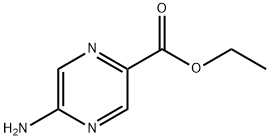How does mechanical weathering and chemical weathering?
How does mechanical weathering and chemical weathering?
Related Products More >
-
- 108-80-5
- USD 50.0000
- 50kg
-
- 108-78-1
- USD 4.5000
- 25kg
-
- 4559-86-8
- USD 750.0000
- 170kg
-
- 77182-82-2
- equest For Quotation
-
- 70131-50-9
- equest For Quotation



 沪ICP备2021018848号-5
沪ICP备2021018848号-5

Mechanical Weathering (Physical Weathering):
Definition: Mechanical weathering involves the physical breakdown of rocks into smaller pieces without changing their chemical composition.
Process: It occurs through physical forces that fracture or fragment the rock.
Examples of Mechanical Weathering:
Freeze-Thaw: Water enters cracks in rocks, and when it freezes, it expands, causing the rock to break apart.
Thermal Expansion: Temperature changes cause rocks to expand and contract, which can lead to cracking.
Abrasion: Wind, water, or ice carries particles that wear away rock surfaces.
Biological Weathering: Roots of plants or burrowing animals physically break rocks apart.
Chemical Weathering:
Definition: Chemical weathering involves the chemical breakdown of minerals in rocks, changing their chemical structure.
Process: Chemical reactions occur between the minerals in the rock and environmental elements like water, oxygen, or acids.
Examples of Chemical Weathering:
Oxidation: Oxygen reacts with minerals (especially iron) in rocks, causing rusting (e.g., iron turning to iron oxide).
Hydrolysis: Water reacts with minerals to form new minerals (e.g., feldspar turning into clay).
Dissolution: Acid rain dissolves minerals in rocks, especially limestone, creating features like caves.
Carbonation: Carbon dioxide in the atmosphere dissolves in rainwater, forming weak carbonic acid, which reacts with minerals like calcium carbonate (found in limestone).
Mechanical Weathering involves the physical breakdown of rocks into smaller pieces without altering their chemical composition. This process occurs through various physical forces such as wind, water, ice, temperature changes, and biological activity. For example:
Freeze-thaw weathering: Water seeps into cracks in rocks, freezes, expands, and repeatedly breaks the rock apart .
Abrasion: Wind or water carries sediment that grinds against rocks, causing them to erode .
Thermal expansion: Rocks expand and contract due to temperature changes, leading to cracking and fragmentation
.
Salt weathering: Salt crystals form within rock pores and exert pressure, causing the rock to break apart
.
Mechanical weathering is particularly prominent in cold climates where freeze-thaw cycles are frequent, or in arid regions where temperature fluctuations are extreme
.
Chemical Weathering, on the other hand, involves the alteration of a rock's chemical composition through chemical reactions. These reactions are driven by interactions with atmospheric agents such as water, oxygen, carbon dioxide, acids, and living organisms. Examples include:
Dissolution: Minerals dissolve in water, often forming new compounds. For instance, carbonic acid in rainwater can dissolve calcium carbonate in limestone
.
Hydration: Minerals absorb water molecules, changing their structure. An example is the transformation of feldspar into clay minerals
.
Hydrolysis: Water breaks down minerals into simpler compounds. For example, quartz can react with water to form iron oxides
.
Oxidation: Oxygen reacts with minerals to form oxides. Rusting of iron is a common example
.
Chemical weathering tends to be more effective in warm and humid climates where there is abundant moisture and biological activity
.
Interplay Between Mechanical and Chemical Weathering:
Mechanical weathering often precedes chemical weathering by creating larger surface areas for chemical reactions to occur. Conversely, chemical weathering can weaken rock structures, making them more susceptible to mechanical breakdown
. For instance, cracks formed through freeze-thaw weathering can facilitate further chemical reactions that dissolve minerals within those cracks
.
Mechanical Weathering (Physical Weathering)
Definition: This process involves the breakdown of rocks into smaller pieces without altering their chemical composition. It's primarily driven by physical forces.
Types and Examples:
Freeze-thaw Weathering (Frost Wedging): Water seeps into cracks in rocks, freezes and expands, causing the rock to crack further. This is common in areas with fluctuating temperatures above and below freezing.
Thermal Expansion: Rocks heat up and expand during the day and contract at night, causing stress that can lead to cracking over time.
Abrasion: Moving particles, such as sand or gravel, scrape against rocks, wearing them down through friction. Wind or water currents can carry these abrasive agents.
Root Wedging:植物根系生长进入岩石裂缝,逐渐加宽裂缝,导致岩石破裂。
Physical Disintegration: Due to gravity, large rock masses break apart into smaller pieces.
Chemical Weathering
Definition: This process alters the chemical composition of rocks through reactions with water, atmospheric gases, or biological agents.
Types and Examples:
Hydration: Water molecules enter the crystal structure of minerals, causing expansion and eventual breakdown.
Oxidation: Exposure to oxygen causes minerals to react, often changing color and structure, like rusting of iron-rich rocks.
Carbonation: Carbon dioxide in rainwater forms weak carbonic acid, which can dissolve certain minerals, particularly limestone and dolomite.
Hydrolysis: Water reacts with minerals, breaking them down into new compounds. For example, feldspars can be transformed into clay minerals.
Biological Weathering: Plants release organic acids that help break down rocks, and burrowing animals physically disrupt the soil and rock layers.
Interplay Between the Two: Mechanical weathering creates more surface area for chemical reactions to occur, accelerating chemical weathering. Conversely, chemical weathering can weaken rocks, making them more susceptible to physical breakdown. For instance, freeze-thaw weathering is more effective in chemically altered rocks because the altered minerals may have weaker bonds. Similarly, chemical weathering can produce clay minerals that are more prone to physical disintegration.
Both processes work together in nature, with one often enhancing the effects of the other, leading to the continuous transformation of Earth's crust over geological time scales.